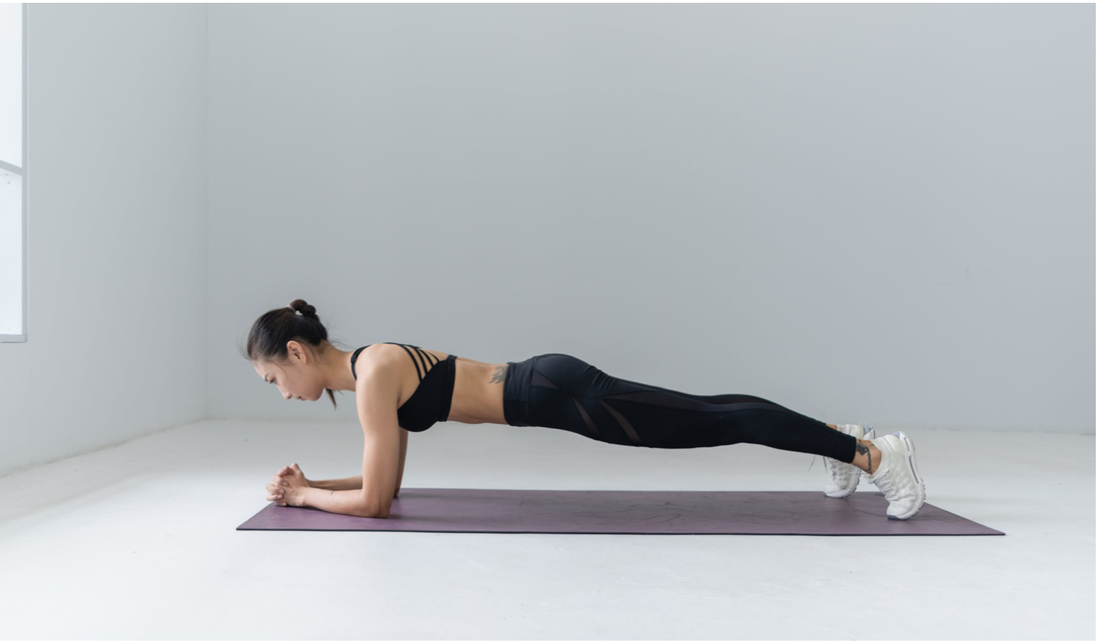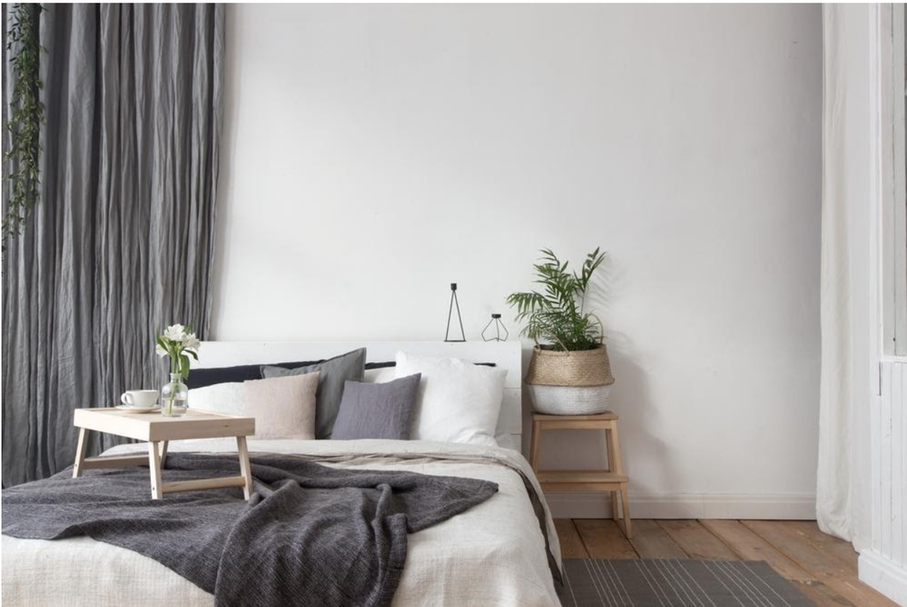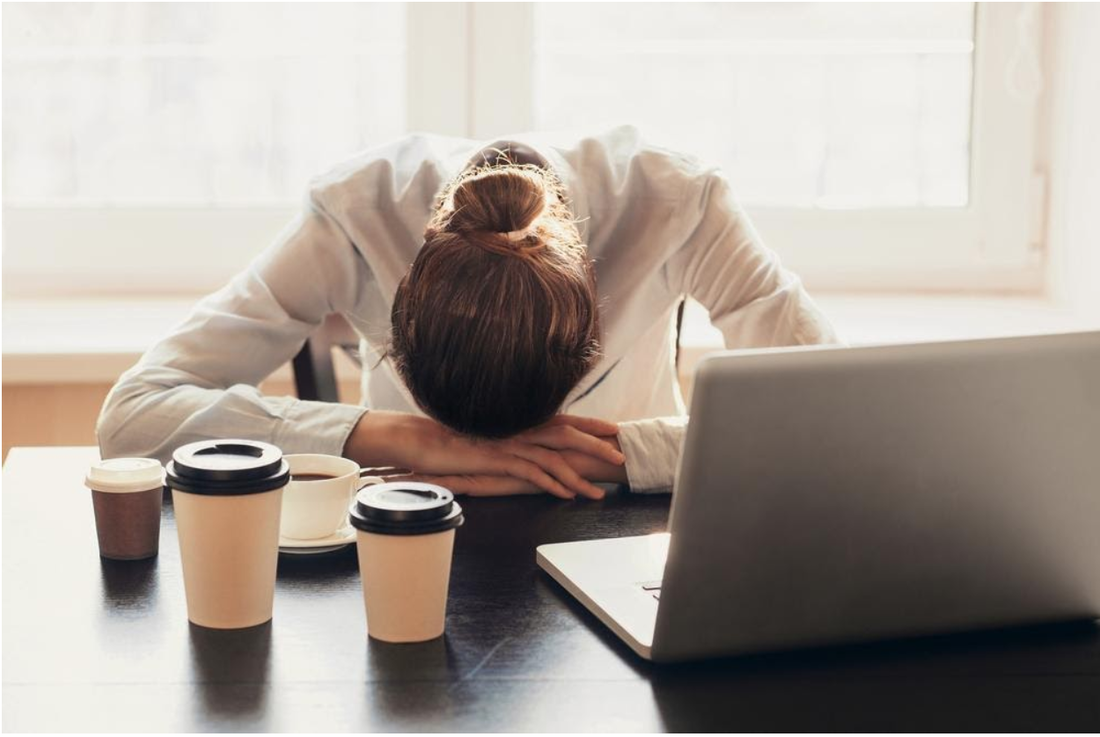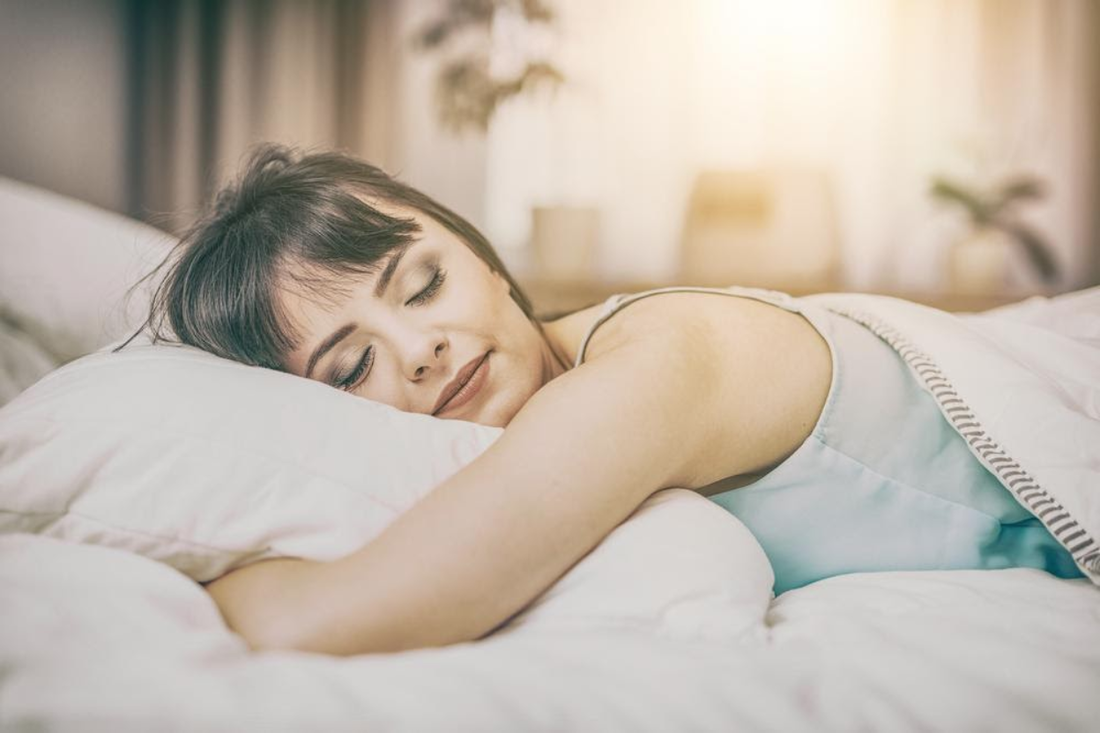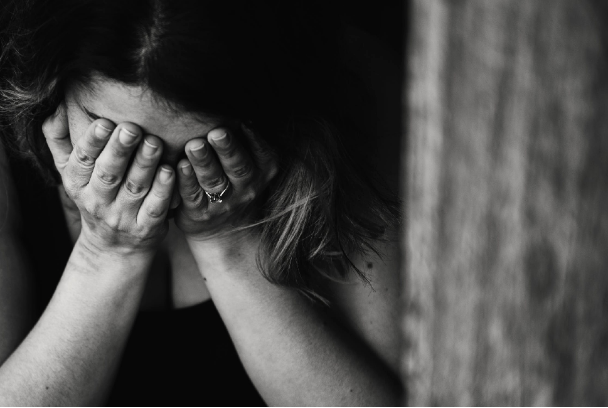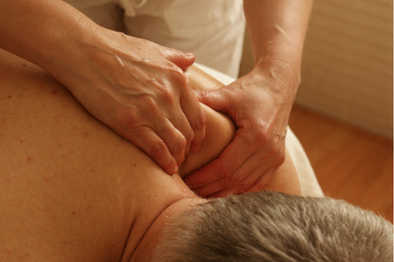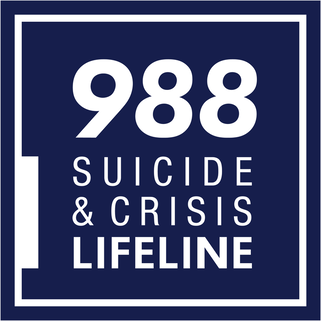|
Image: Pixabay
Are you living your best life, or are you sort of okay, just fine, kind of blah? It’s not uncommon to experience periods of stagnation and a dip in motivation. There are a few tried-and-true methods for pulling yourself out of that lackadaisical haze and into a pattern of positive momentum. So, how can you prepare your current self to live out the future you’ve always wanted? Invest in yourself now so that your future self can look back and be grateful for your foresight and preparation, even when things were hard. Visit Providers for Healthy Living for quality mental health care and treatments to live your best possible life. Move Your Body It’s easier said than done, but developing physical fitness will be well worth the effort as the years go by. Find enjoyable types of exercise that get your heart pumping. This could mean an all-out boot camp workout, or it could mean roller skating, surfing, walking the dog or playing frisbee. Not only will the activity improve your confidence by way of endorphins, but it can also build muscle, melt fat, lower blood pressure and decrease stress. Sounds like a good recipe for a confidence boost! Talk to Yourself Whether you say it out loud or in your head, give yourself some positive feedback. Remind yourself that you are awesome, capable, smart and worthy. Reframe difficult situations as opportunities for learning and growth. Pay attention to the thoughts you have about yourself and challenge the negatives. Psychologists have found that many people judge themselves much more harshly than they ever would another person. This can lead to identifying yourself in a negative light and acting out in ways that match that inner antagonist. On the other hand, giving yourself grace and telling your inner critic to pack their bags can help you take more positive actions. A therapist or counselor may provide invaluable help in gathering insight and facing those demons. Make a Change If you’re feeling stagnant, it might be worth reconsidering one of the largest time commitments in life: your work. Take some time to parse out which elements of your job you find the most (and least) fulfilling and what your top priorities are. You might even consider striking out on your own. Use your experience and passion to fill a niche that’s unique to you. To keep your confidence up in the process, make sure you develop a solid business plan with details like your company structure, how your business will operate, what services or products you’ll sell and a marketing plan. This may be a perfect time to take the leap and be your own boss. Stop Multitasking The truth is that brains can only do one thing at a time. When you multitask, your mind is actually rapid-switching between disparate thoughts, essentially dropping the ball a little bit on each one. To be at your most productive, focus on one thing at a time and finish what you start. Sticking with and finishing a project, even when it’s difficult, builds work ethic and gives your brain that hit of dopamine that will reinforce positive thought patterns. When you keep your focus, you increase your accuracy, working memory and ability to think critically and creatively. It can feel a little overwhelming to gaze at the top of the mountain of dreams and realize how much effort and time it might take to scale it. The good news is that every baby step is a step in the right direction, and progress is progress, no matter what. Keep up the good work, soldier on and reach for the sun, moon and stars. This article was written by Patricia Sarmiento. Check out her website at publichealthcorps.org.
3 Comments
(Image: https://www.pexels.com/photo/photo-of-woman-doing-yoga-2294354/ )
Going to the gym isn’t really an option right now. Most of them are closed due to the ongoing Covid-19 pandemic. However, even at the best of times gym memberships cost money and when you have a busy schedule, it might not always be easy to get to the gym. During the pandemic we’ve all had to adapt our lives. For many avid gym-goers that means working out from home. Working out from home can be a good way to stay fit, but if you live in an apartment, you have to worry about disturbing your neighbors. With many of your neighbors potentially working from home now, they don’t want to hear your workout on business calls. In turn, you don’t want to be midway through your workout only to hear a knock on the door or your neighbor banging on the floor because of the noise. Fortunately, you can get a good workout without making a lot of noise. You just need to make a few adjustments to your routine. All you need is some lightweight women’s supportive sneakers and a little equipment to get started. Get Some Free Weights Lifting weights can be good for building muscle, strengthening your body and they can even be great for losing weight. The only problem is that a weight bench can be noisy. If you don’t want to give up on lifting weights because you live in an apartment, you should invest in some free weights. They are not as noisy and they can help you reach your fitness goals. You could also consider kettlebell exercises if you want to add some variety to your workout. Use Bodyweight Bodyweight exercises are great for providing a full-body workout. You also have a range of bodyweight exercises that do not generate a lot of noise. Squats and pushups are a good option for any workout, but the possibilities are almost endless when you go with bodyweight exercises. Just avoid exercises that will cause your feet to impact the floor. Avoid Exercises With Jumping or Running Motions Exercises that involve jumping or running motions are common in many home workout routines. If you happen to live in an apartment, you should skip things like running in place, jumping jacks, skipping rope and plyometrics. If you want to benefit from this type of workout, put on some men’s comfortable sneakers and go out for a run. You could even jog to the nearest park to some of your favorite exercises that might not be good for your apartment. Try New Cardio Exercises Without running and jumping, you might need to look for new options to get your cardio workout. That means looking for low-impact cardio exercises. Various kicking and twisting exercises can be a good way to get a cardio workout without making a lot of noise. You could also try shadowboxing to get your heart rate up. If you have the money and the space, you could consider buying a stationary bike to provide a quiet cardio workout. You want to stay fit in the pandemic, but you should avoid causing problems with your neighbors. With these tips, you can maintain your fitness and keep the noise to a minimum. About the Author: Rae is a graduate of Tufts University with a combined International Relations and Chinese degree. After spending time living and working abroad in China, she returned to NYC to pursue her career and continue curating quality content. Rae is passionate about travel, food, and writing for Taos Footwear. Imagine that you’re walking through a field of grass. As you take a step, the green blades bend and flatten, but return to their upright position after some time. Now, if you walked through that same field of grass everyday, in the same spot, eventually the grass would flatten and die and you would build a small bunny trail. The longer you use the bunny trail, the wider and deeper it would grow, until you had a sizable walking path.
The human brain is, in many ways, a field of grass - our repetitive thoughts and behaviors build hundreds of different bunny trails, some healthy and some unhealthy. As the new year begins, many people will make resolutions to try to build a new healthy habit or discontinue an unhealthy one and many will find that they do not stick to the changes long term. Understanding neuroplasticity, and how to utilize your brain to your advantage, could help make you more successful. Neuroplasticity is the ability of the brain to learn, change, and adapt. For many years, many believed that the ability of the brain to do this was limited from birth until we reached our mid-twenties and our frontal lobes finished developing. Thankfully, this is not the case, and we are able to build new neural pathways throughout our lives, and benefit greatly from doing so. So, how could this be useful for your therapy, general well being, or New Year’s resolutions? Luckily, you can intentionally choose to build new neural pathways; we do this all the time when we listen to a new song, or learn a new skill, and there are some steps that can help make the process faster and more effective. Brains already use so much of our body’s daily energy that building new neural pathways is often a struggle. How many of us have resolved to do something healthy...and the next thing we know we’ve failed again? It isn’t because we don’t WANT to do the healthy behavior, or think in a healthier way, but because our brain already has a REALLY BIG bunny trail for the maladaptive behavior and...completely untouched grass for the healthy one. From an energy cost perspective, doing what we’ve always done is just easier and less costly at that exact moment. Of course, given enough time, not building healthy neural pathways can result in a multitude of negative thoughts, feelings, and behaviors that ultimately hurt us more. So, if you’ve ever wondered why you feel like you can’t just DO the thing you want to, rest assured it happens to most of us, and your brain is basically acting like a fussy toddler. As a clinician, the complaint I hear the most is “I’m doing all the healthy stuff and I still don’t feel better yet. It’s not working!” What most people don’t realize is that building a neural pathway takes a long time. How long have you engaged in an unhealthy habit, or a maladaptive thought? Weeks? Months? Years? For many, their struggles have been long standing. If we go back to the field analogy: walking on the same path for 5, 10, or 15 years is going to look MUCH different than if you’ve walked on a path for 5 weeks. The problem isn’t that it isn’t working, it’s that the first neural pathway is still bigger and more powerful. We just need to make the new pathway bigger. Here are a few steps that can help do that. 1. Tip of the iceberg. When we engage in an unhealthy thought or behavior, our brains are wired in such a way that you don’t only have our immediate unhealthy thought, our brain will also subconsciously supply us with every bit of evidence it has to support that belief. So, if you think “I can’t succeed,” your brain will go through every memory and thought it has related to failure. Likewise, when we think positively, our brain will supply us with all of those similar positive experiences. The more you think and engage in healthy behaviors, the more positive feedback loops you tap into, and the more likely you are to keep thinking and doing better. 2. Repetition, repetition, repetition. When it comes to building a neural pathway, your brain has an awful time at determining truth/lie, good/bad, and healthy/unhealthy. It typically has a tendency to go “the most experienced must mean truth,” which basically means that whatever you do and think the most becomes your truth and sense of self whether it’s true or not. Most of us can probably identify an unhealthy belief we hold about ourselves that isn’t actually logical or even correct, but we’ve thought it so long we accept it as true. In therapy, these are commonly known as cognitive distortions. Repeating new cognitive reframes or affirmations is a great way to build those new positive pathways. Once you have come up with some healthier thoughts and behaviors, just keep practicing them over and over. 3. “Do, or do not, there is no try.” I’m quoting Yoda, here, but he’s right. Even if you do not currently believe the healthy thought or positive affirmation you are practicing, or even if you don’t like engaging in the healthy habits you are trying to adopt, the more you do them, the better it becomes. You don’t have to believe or like it for it to positively rewire your brain. Say your reframes and positive affirmations out loud. Sing them. Jump around and recite them. Write them down. Put them on sticky notes everywhere. Go out and do whatever healthy behaviors you have planned. Bringing our physical body into the equation helps integrate your experiences more deeply, as you are tapping into multiple sensory systems in your brain. Which means, you’re still building a new bunny trail, but now you have a lawn mower. A lot of people feel fake when they are first trying a new reframe or positive affirmation. I often hear “but I don’t actually feel this way about myself.” I know. That’s the unhealthy neural pathway and you’ve fallen onto it again. Your brain only thinks it’s true because it’s heard it so many times. You’re not going to feel different until that new path is there and you have to build it. Doing these healthy behaviors will help you build it and then someday soon you will actually believe all the good stuff about yourself. 4. Once more, with feeling. Now that we’re doing and thinking better, it’d be nice to give our new neural pathway some major fire power. Our brains are wired to remember strong emotional moments, so anything we can do to add any emotional boosts is good. Physical exercise, music, positive podcasts or social media influences, the buddy system, creative endeavors, etc., are all great options. Music is especially helpful in eliciting powerful emotions and playlists are a great way to boost your mood. The more positive emotion you can add to these exercises, the better. Like physically moving your body, you’re supercharging your brain with feel good neurochemicals, and that will help reinforce new thoughts or habits. It’s like the emotional equivalent of giving your brain a cookie. Who doesn’t want a cookie? Cookies are good, and your brain wants healthy emotional ones. 5. Channel your inner tortoise. The good news is that even if your unhealthy neural pathway took years to develop, you probably did it unconsciously. Consciously focusing on new thoughts and behaviors will build the new one WAY faster. It may still take several months, but that’s still a lot less than multiple years. Be patient and STICK TO IT. You can’t see your neural pathways building and, unfortunately, this is a major reason people stop doing healthy things. But the neural pathways are building and are there, so stay the course. It will help. I promise. 6. Birds of a feather. Remember, your brain believes what it hears the most. Make sure you are spending time with people and influences that are consistently helping to feed into healthy beliefs and lifestyle choices. If you need to take a break from social media, or spend less time with someone who puts you down and makes you feel bad, then do so. Surround yourself with people and influences that are channeling the same healthy energy that you are, and will uplift, encourage, and support you. 7. Be concrete. The more specific and definite your goals or thoughts are, the better. Try to avoid vague statements like “I will hopefully be more motivated tomorrow” and, instead, say something like “I will accomplish _____ tomorrow.” Don’t leave gaps for your unhealthy beliefs to sneak in and derail you. If you are already doing this, and still struggling to accomplish your goals, try breaking them down into smaller and more easily managed tasks to see if that helps fix the problem. We have a tendency to bite off more than we can chew, even when we aren’t operating as our best selves. 8. Sleep, meditation, medication. As in all things, you need sleep. Sleep allows your brain a break to process the new skills you’re building and integrate them more fully. Also, no one functions well when they’re tired and cranky. Meditation or mindfulness exercises also allow your brain the space to keep building and making those new, healthy connections. It also allows you the time to sit and examine whether you are staying in your healthiest mindset. And, of course, if you are on a prescribed medication, continue taking it. Or, if you have been getting help for some time and are seeing very limited improvement, medication may help give your brain the boost it needs so that your work will be more effective. 9. It’s a journey, not a destination. The last most common problem I see happens after people have successfully been engaging in healthy changes for a few weeks or months. They start to feel better, and then stop doing all of their healthy coping skills. Remember, those unhealthy neural pathways have probably been forming for a huge portion of your life. If you want these changes to be long lasting, you’re going to have to do them for a really long time. Although, if you’re choosing healthy options, the change may well be lifelong because it’s good for you and hopefully enjoyable. You’re feeling and doing better because the skills and changes are working. Don’t stop, or you could regress and start feeling worse again. Cultivating a healthy mindset and lifestyle are not always easy and require consistent work and dedication. Those struggling with mental health issues have even more to contend with, but hopefully some of these suggestions will help you better understand your mind, struggles, and come up with more effective solutions for continuing to be your best self. These are only a few of the multiple options available to try, and some of these suggestions may not be effective for treating certain mental health issues. However, they can be utilized by anyone for overall mental health and wellness. There are several wonderful books and resources that talk about neuroplasticity that provide help on healthy cognitions and other activities. For an easy, comprehensive look at neuroplasticity in its totality, I’d recommend “The Power of Neuroplasticity” by Shad Helmstetter. Now that 2020 is over, hopefully we can all take the time to consciously choose how we want to proceed into the new year, and make 2021 a better year than last year was. I wish you all health and happiness, and I believe each of you has the power within you to keep reaching for your best self. Although, should you need a little extra help, we are all here to help you however we can. Happy New Year! According to the CDC (Centers for Disease Control and Prevention), you should do what’s best for you and your loved ones this holiday season. This may mean taking care of yourself, doing what’s best for your household, and spending time with those in your own household.
What can you do to decrease or manage the stress associated with the upcoming holiday season when you can’t be with friends and family in person due to the COVID-19 pandemic? Here are some suggestions:
Remember that none of these strategies will work perfectly the first time you try them and they won’t work right away. They take practice and they may take a while to work. Stick with them. If one doesn’t work, try another. Try them all. Also remember that you are not alone. Many people out there feel the same way and are trying to manage their stress. Keep going. It will get better! The pandemic will end eventually. We will get to a new normal again. Hang in there! As the fall days turn into winter months, the days shorten, the air turns colder, and the sun seems to disappear for months at a time, especially in the Midwest. For some, this lack of sunshine can make the days seem to last forever. Some of us are more sensitive to these darker days and can feel our energy drain and our mood dampen. It’s not uncommon to feel a little less energetic and a little more down during the colder months and develop the so-called “winter blues”. However, if you are among the approximately 5% of people who develop clinical depression during the darker and colder winter months, you likely experience many more symptoms and have a much harder time functioning. Some of the signs to look for to let you know that you may be experiencing seasonal depression include worsening mood during the fall and winter, lower energy levels during this time, difficulty focusing and concentrating while feeling down, changes in sleep (either sleeping more or difficulty sleeping) in the fall and winter, changes in hunger (either eating more or eating less) in the colder months, less interest in doing things that normally would bring you joy during the darker days, feeling worthless or having lots of negative thoughts and feeling guilty about things that you have no control over during these winter months, being less motivated or more agitated during the fall and winter, and/or having thoughts of death or dying during these less sunny days. If you have a majority of these symptoms, you likely have clinical seasonal depression and should talk to a professional about it. Unfortunately, we don’t know exactly why seasonal depression happens. There are a few different theories about it, however. Some ideas include a change in the way your body regulates serotonin during the winter months. Serotonin is one of the chemicals in the brain that create feelings of positivity and when that chemical is disrupted, we can feel down or agitated. Another theory about seasonal depression is that when it is dark outside more than usual our brains continue to produce melatonin during the day. Melatonin is normally a hormone that makes us sleepy at night, and if we don’t stop making it, we will feel sleepy and tired throughout the day. And research also shows us that too much melatonin can create feelings of depression. As you can imagine, being inside more, possibly eating more, being less active, maybe sleeping more, and seeing other people less often during the winter months can also have a negative impact on our moods. But the good news is that we can do things proactively to help decrease seasonal depression (or just the winter blues), and there are treatments for it.
If you know you are affected by the winter blues or seasonal depression, try one or all of these suggestions. Have a talk with your healthcare provider. Recognizing the signs of depression early is the key to feeling better faster. The earlier you implement these strategies and if you practice them consistently, the more likely they are to work. The team at Providers for Healthy Living is here to help if you need it! We offer a wide range of therapy and medication management services for depression, anxiety, and many other mental health diagnoses. If you find that you need more intensive help this winter, reach out to us. We can help. Register as a new patient on our website if you are interested in receiving assistance. If you need immediate help, the National Suicide Prevention Lifeline is always available at 800-273-8255. Photo: www.dreamstime.com/seasonal-affective-disorder-sad-depression-winter-season-anxious-alone-young-girl-feeling-lonely-stress-anxiety-seasonal-affective-image194675560 This year has been a challenging year for most of us. From the ongoing COVID-19 pandemic to the still lingering election controversies, it seems the list of stressors for the year 2020 keeps growing. And many of us turn to food for comfort. Being inside and alone can mean that food becomes our only comfort at times. We feel stressed, lonely, cooped up, and panicked. Eating does temporarily increase our serotonin levels and makes us feel good for a short period of time, but that feeling doesn’t last and we find ourselves searching for something else to eat because we need more comfort.
The upcoming holidays can bring about a variety of emotions. For some, the holidays are a time for reflection, friends, family, and festivities. For others, the holidays are a time of stress and anxiety. With increased stress, food can sometimes become an easy method for coping. This year, due to the pandemic and restrictions on travel and large gatherings, our holidays may look different. We may be home alone instead of gathering with friends and family. This may increase our feelings of isolation and sadness, leading to more opportunities to overeat or to comfort ourselves with food. If you tend to turn to food for comfort and emotional support, here are some strategies that could help you deal with holiday stress without overeating.
By practicing these few simple strategies, it is possible to get through the holidays without turning to food for comfort. Pay attention to your body. Eat when you are hungry. Be mindful and slow down while eating. Stop eating when you feel full. Drink plenty of water. Oh, and don’t forget to exercise every day. Have fun this holiday season! But if your eating gets the best of you, remember that Providers for Healthy Living offers nutritional counseling by our licensed dietician, Kelsey Russell, RDN, LD, and cognitive behavioral therapy and obesity medications by our obesity medicine specialist, Matthew Lowe, DO. We are here to help you regain control of your eating and help you meet your nutrition and weight goals, if you need us. Register as a new patient on our website if you are interested in receiving assistance. Photo: https://www.dreamstime.com/thanksgiving-holiday-table-served-turkey-lot-food-roasted-dinner-celebration-apple-mushroom-meal-baked-cooked-image157705400 According to a recent survey, over ⅔ of Americans are stressed about this year’s election. If you are in this majority, you may be feeling increased anxiety, difficulty sleeping, trouble focusing on work, or feeling more irritable and on edge. These are all natural responses to increased stress. As the election approaches tomorrow, we are bombarded with commercials, TV interviews, social media posts, and news shows focusing on “what if” scenarios. It’s hard to escape. And given the current pandemic and the number of absentee votes cast by mail, we likely won’t know the outcome of the election for days or even weeks after election day. So, the stress is likely to continue and maybe even increase for days after the election.
What can you do to decrease or manage the stress associated with the upcoming election and the days following? Here are some suggestions:
Remember that none of these strategies will work perfectly the first time you try them and they may not work right away. They take practice and they may take a while to work. Stick with them. If one doesn’t work, try another. Try them all. Also remember that you are not alone. Many people out there feel the same way and are trying to manage their stress. Keep going. It will get better! Photo: https://www.dreamstime.com/election-day-usa-debate-president-voting-election-voting-poster-vote-usa-election-day-usa-debate-president-voting-image191048555 As the new year approaches and open enrollment periods for insurance elections begin soon, it is important to understand all the terms associated with insurance plans and what to look for when making choices for next plan year. The first thing to know when choosing insurance for next plan year is what a plan summary is. A plan summary (or benefits summary) explains all the benefits of your plan. This document, which is available from your employer, insurance broker, etc., should be examined carefully. Make sure it covers all the benefits that you (or your family) need. Any specific treatments or types of care that you or your family needs should be questioned to see if it is covered under the plan. The costs of the plan are also important for you to understand. The costs of the plan include the monthly premiums, but so much more. If the plan has a deductible, this is the amount of money you will need to pay for your own care or your family’s care before the plan pays anything. Sometimes there are copays for office visits separate from or in addition to the plan deductibles that need to be paid. Some plans have a coinsurance percentage (anywhere from 10% to 50% sometimes) that you must pay even after you’ve met your deductible. All plans should also have an out-of-pocket maximum limit that you are required to pay for the plan year, which generally includes deductibles, copays, and coinsurance amounts. Once you’ve paid that out-of-pocket maximum for the plan year, the plan pays 100%. Here’s an example: Jon pays $1000 per month for a single employee plan. His insurance coverage includes a $3000 plan year deductible with a 20% coinsurance after the deductible is met. He has a separate copay for medications of $10 for generic medications, $30 for name-brand medications, and $100 for speciality medications. He also has a $30 copay for primary care, mental health, and walk-in clinics, and a $60 copay for urgent care visits. None of these visits require him to meet his deductible and only require a copay. His plan has a $5000 out-of-pocket maximum per plan year. If Jon goes to an urgent care, he will pay $60 for his copay. The copay would cover his visit with the urgent care provider. If the provider at the urgent care orders labs or x-rays, however, those charges would be applied to his deductible, and he would be responsible for those costs since he has not yet met his deductible. If he had met his deductible, he would still need to pay 20% of the costs of his x-rays and labs. If the urgent care provider prescribed Jon a medication, he would pay a copay at the pharmacy - either $10 for a generic medication or $30 for a name-brand medication. Once he has paid out a total of $5000 for the plan year, including deductible, copays, and co-insurance amounts, his plan would cover 100% of the costs for the remainder of the plan year. My hope is that you understand the information you need to know before making your choice about insurance for the next plan year and that you are more aware of the terms used by insurance companies so that you can make an informed choice. When in doubt, ask your human resources manager, supervisor, or plan administrator. Photo: https://www.dreamstime.com/stock-illustration-health-insurance-concept-doodle-chart-keywords-icons-image78777274 There are many reasons why people experience poor sleep. Some men and women have one of the several medical conditions related to insomnia, such as arthritis or lower back pain. An uncomfortable sleeping environment can also have an impact on your rest, as well as your overall health. According to the doctors at Harvard Health, external factors such as a room that is too warm or bright can cause you to sleep less or experience less restful sleep throughout the night. If you do not improve your sleep space, your insomnia or medical conditions can get worse. Wondering whether you need to adjust the conditions of your room? Read the following facts. They are sure to inspire and motivate you to improve the way you rest at night. 1. Increased Risk of Disease If an uncomfortable room causes you to have insomnia, you may be increasing your risk of developing a serious medical problem. Experts on sleep and health say that some of the most common conditions related to insufficient sleep include diabetes, obesity, and cardiovascular disease. When you do not get enough rest, you may also be suppressing your immune function. This could make you more susceptible to seasonal illnesses, such as the common cold. How to fix it: A quiet room can help ensure you fall asleep fast and keep resting until it is time to wake up. If you are a light sleeper, try using a fan or a sound machine. The moderate amount of white noise can help to block out any outside traffic or noise inside the home. Some sound machines come with color-changing properties or nature sounds, so you can help lull yourself to sleep and stay in a peaceful state throughout the night. If you already have a chronic health condition, make changes to your space as soon as possible so you can get enough sleep. Talking to your doctor about your insomnia can help them monitor your symptoms and, if necessary, find additional treatment options. 2. Changes in Mood or Energy When you are experiencing sleep deprivation, it is common to feel more cranky than usual. This is because a lack of sleep is tied to your energy level and mood. Unfortunately, this irritability and anger can negatively affect your personal relationships and may even hinder your performance at work. It can even make you more susceptible to developing symptoms of anxiety and depression. If you already have one of these health conditions, they could become worse. How to fix it: Try one of the many relaxation techniques for winding down at night. Self-massage, a warm bath, and aromatherapy with essential oils are just a few of the activities you can do before bed to help you to de-stress. Among the most common essential oils for sleep is lavender, but you can also try cedarwood or bergamot. If you think you are experiencing mood changes as a result of poor sleep, talk to your doctor. They can help you find the best way to feel better, as well as recommend their favorite ways for you to enhance your sleeping environment. 3. Loss of Memory When you sleep at night, says WebMD, your brain gets the time to process information from the day. It also forms memories of what you have learned. If you do not give yourself the time to go through each sleep cycle, you could experience memory loss. It may even be more difficult to recall information, such as old facts or past events. By getting the right amount of sleep each night, you can help to improve your memory and processing. How to fix it: Be sure you are getting the right amount of sleep for your age and personal needs. Make sure your room temperature is cool and comfortable, so you do not wake up as much throughout the night. Choosing the right sheets and blankets for the temperature and season can also help to prevent discomfort and sweating. 4. More Back Pain Sleep problems due to an uncomfortable environment can also contribute to increased lower back pain. According to Spine-Health, a lack of restorative sleep only enhances pain and tension in the body. When you are tossing and turning, you become more aware of the discomfort. Waking up frequently can also make it more difficult to find a relaxing position. If you do not have the right pillows or mattresses, it is possible to experience more pain and soreness. How to fix it: Invest in a body pillow or cushion to put between your legs. This small adjustment can help you find the right position for sleep, even if you are living with lower back pain. Consider installing light-filtering or blackout blinds, which will help to block out the sun, as well as streetlights. Declutter your room so you can stretch or do relaxation activities before bed. A clean and neat space will help you find your Zen as you meditate, breathe deeply, or rest your legs and back. Improving Your Sleeping Environment By adjusting your sleeping environment, you can improve your sleep hygiene. You can also help to reduce symptoms of chronic conditions, including lower back pain. To help yourself sleep at night, try laser therapy for back pain. This therapy uses a technology known as photobiomodulation therapy (PBMT), also formerly often referred to as low-level light therapy (LLLT). Wearing a safe PBMT device for just 30 minutes per day can help to enhance your comfort, mobility, and function both day and night. Now you have a variety of solutions at your fingertips. Follow the suggestions above and use the tools we have included in this guide to make your room more acceptable for rest and your body more ready for sleep. Staying committed to improving your sleep routine can enhance your whole body wellness. Photos: https://www.shutterstock.com/image-photo/interior-white-gray-cozy-bedroom-593768396 https://www.shutterstock.com/image-photo/tired-businesswoman-sleeping-on-table-office-391111147 https://www.shutterstock.com/image-photo/beautiful-young-woman-sleeping-on-bed-613463918 About the Author: Mark Broadly graduated from Vanderbilt University in 2016 with a double major in Biology and Chemistry. He is now a student at Emory School of Medicine in Atlanta working towards his Masters in Clinical Research. In the little free time he has, he loves writing about his experiences and knowledge in the health and wellness field.
According to the World Health Organization, more than 264 million people around the world suffer from depression. Many don’t realize that depression not only changes one’s mood, but can result in body aches, especially back pain. This article will explore more behind this mental health concern and how back pain is connected to it. What Causes Depression? Depression can be caused by a handful of things. This includes:
Signs of Depression This health issue affects people in many different ways:
How Depression Triggers Back Pain Many often don’t realize that depression can result in back pain. This is because it causes tension in the body, especially toward the lower back. In fact, studies have shown that those with depression tend to feel pain more than others which can make their back pain even more intolerable. Ways to Help Reduce Back Pain When Suffering From Depression Use Natural Antidepressants
Using natural antidepressants will not only boost your mood, but will prevent pain. Chamomile This herb has long been used to help acute back pain. It’s able to do this thanks to the high levels of glycerine, a type of amino acid. Drinking a warm cup of chamomile tea isn’t only soothing, but can reduce anxiety and ease tense muscles. Lavender A few studies have shown that lavender could help improve the body's central nervous system, something that affects how the brain functions. Lavender not only helps with releasing more serotonin (a chemical that positively adjusts your mood), but is anti-inflammatory. This can help with swelling and tension caused by back pain. Omega-3 Omega-3, especially in the form of fish oil, could help improve back pain. In a 2006 study, 250 patients with neck or back pain were given fish oil as a natural NSAID (anti-inflammatory). Toward the end of the study, 125 participants found that fish oil helped with their pain. In addition to helping with back discomfort, Omega-3 could also improve mood due to its high amounts of fatty acids that keep the brain healthy. Peppers It might surprise you to learn that peppers can be used as a natural antidepressant. Due to their high levels of capsaicin, this vegetable can boost your mood. Peppers are also anti-inflammatory, which can help with reducing back pain caused by depression and can help heal the affected areas. Kiwi Kiwi is packed with vitamin C which is needed for producing collagen. Collagen is believed to help keep your muscles healthy which can reduce back pain. In addition to this, kiwis can prevent fatigue and give you more energy. Saffron This tangy spice has been found by numerous studies, including one published in the Journal of Pharmacy and Bioallied Sciences, to be helpful against depression. While it’s not known exactly why it’s able to do so, many believe it boosts serotonin levels in the brain and prevents oxidative stress. Saffron can also improve back pain because it stops muscle weakness and inflammation. Spinach This leafy green has an impressive amount of tryptophan and folate which both increase your body’s serotonin levels. Because it’s also packed with magnesium, it can prevent and treat back pain by relaxing your muscles. Try Journaling Sometimes back pain can be caused by stress due to an overflow of emotions. By journaling, you might find that releasing these feelings can help muscles in your back to relax because you aren’t building tension in them. Do Exercises Exercising has been shown to help significantly decrease back pain. In one study published in the medical journal Healthcare, over 32% of participants who completed a home exercise routine found that their back pain dramatically reduced. By doing simple exercises, like walking or jumping jacks, you’ll encourage your body to release endorphins. These natural chemicals are a type of painkiller that often lead to euphoria. By moving around and keeping your body active, you’ll not only prevent tension that can cause back pain, but will also improve your mood. Get a Massage A popular and very calming way to stop back pain is to get a massage. This is one of the many benefits of going to a chiropractor as they offer various types of massages to help stop your pain. In a study done by the Mayo Clinic, massage therapy was shown to help relax participants and improved their mood. This is because it works to lower cortisol (a stress hormone) and release more serotonin. There are a handful of massages that can be done to help improve mood and decrease back pain.
Meditation Meditation might also be useful to try. It’s able to slow your heart rate which can reduce stress and anxiety and has been shown to improve mood. Meditation also works to release built-up tension which can dramatically reduce back pain. Depression is a serious mental health issue that can result in a variety of different symptoms, including back pain. However, by understanding how back pain is connected to it, you can work toward not only preventing it, but also reducing other complications caused by depression. References https://www.nimh.nih.gov/health/publications/depression/index.shtml https://www.who.int/news-room/fact-sheets/detail/depression https://www.mayoclinic.org/diseases-conditions/depression/expert-answers/pain-and-depression/faq-20057823 https://www.ncbi.nlm.nih.gov/pmc/articles/PMC4934575/ https://www.mayoclinichealthsystem.org/hometown-health/speaking-of-health/can-massage-relieve-symptoms-of-depression-anxiety-and-stress https://www.ncbi.nlm.nih.gov/pmc/articles/PMC5437114/ https://pubmed.ncbi.nlm.nih.gov/16531187/ https://www.psypost.org/2018/10/capsaicin-from-chili-peppers-found-to-produce-antidepressant-like-effects-in-rats-52322 https://www.ncbi.nlm.nih.gov/pmc/articles/PMC6266642/ About the Author - Dr. Brent Wells founded Better Health Chiropractic Alaska in 1998. He is currently leading 10,000 Alaskans to more active and pain-free lifestyles without drugs or invasive surgeries. He brings a progressive and highly innovative approach to chiropractic care. Dr. Wells continues to further his education with ongoing studies in spine conditions, neurology, physical rehabilitation, biomechanics, occupational ergonomics, whiplash, and brain injury traumatology. He is also a member of the American Chiropractic Association and the American Academy of Spine Physicians. |
|
Please DO NOT use this email address for medication refill requests or for emergency situations.
Click here for refill requests instead of using email: Medication Refill Request Form If you have a medical emergency, email is never the appropriate way to communicate your needs, and you should instead call 911 or go to the nearest ER. If you are having suicidal thoughts and need to speak to someone immediately, you can contact Suicide Prevention Hotline at the number (and link) below. PATIENT@PROVIDERSFORHEALTHYLIVING.COM
Communications via email are not secure. Although it is unlikely, there is a possibility that the information you include in an email can be intercepted and read by other parties besides the person to whom it is addressed. |
|
2024 Providers for Healthy Living | All Rights Reserved
|


